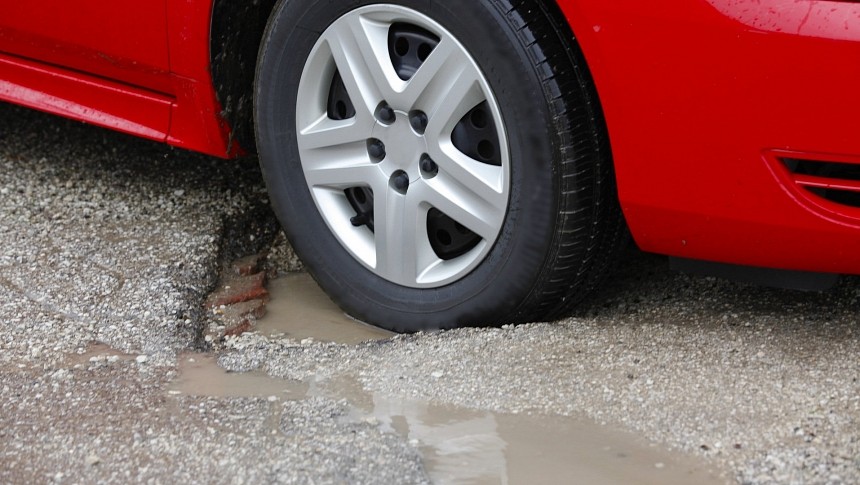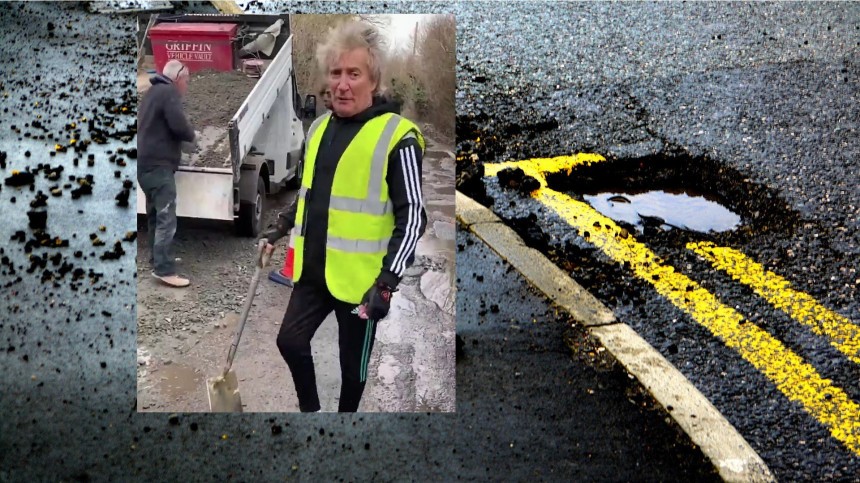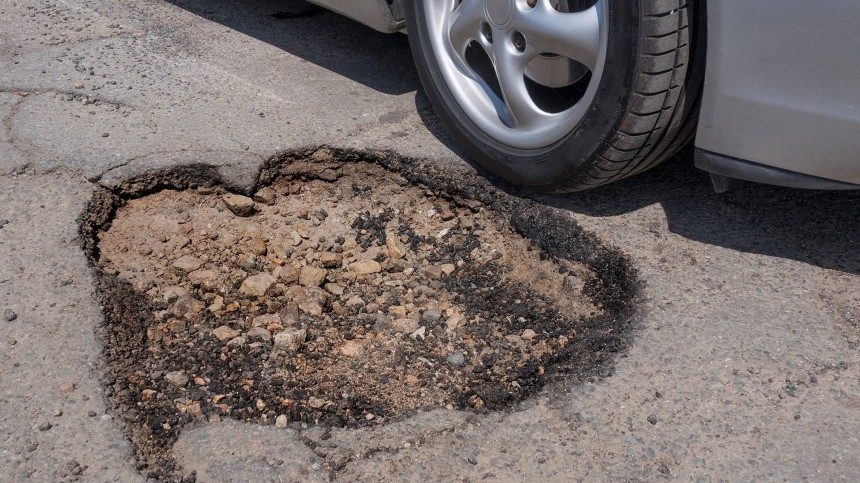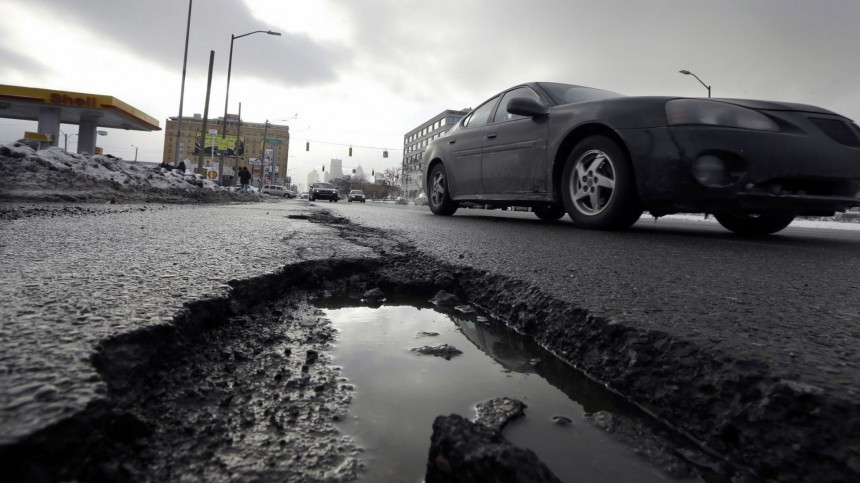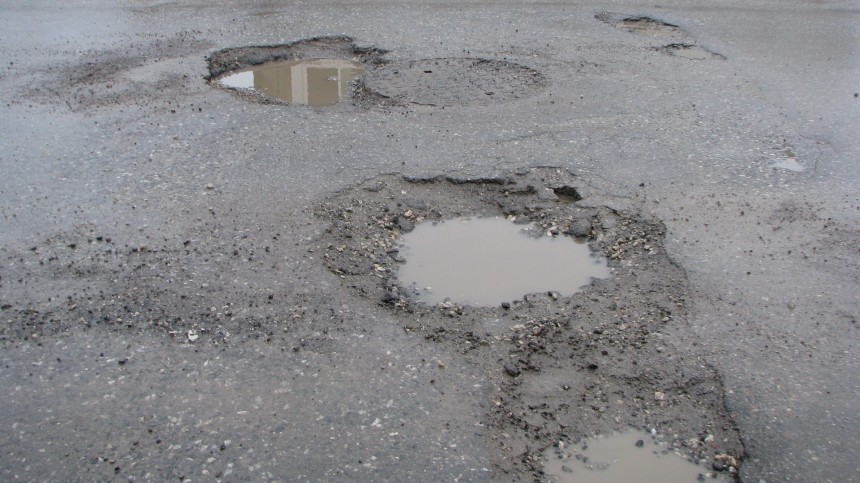Several people are concerned about the weight of battery electric vehicles (BEVs). Their massive battery packs may represent a higher risk of serious injuries and death in crashes. In April, the British Parking Association warned that old parking buildings could fail if BEVs became the industry standard. A while later, a parking building in New York collapsed just due to the higher weight of modern cars. The Telegraph sorted out another danger posed by the added mass BEVs present: damages to roads, increasing the number of potholes.
The British newspaper used a known method that highway engineers frequently apply in their studies. The idea is that any weight increase in an axle of a vehicle raises the damages to the road to the fourth power – hence the formula's name. The Telegraph then used a study from the University of Leeds that calculated the mass of 15 popular BEVs in the United Kingdom. The research revealed that electric cars are 312 kilograms (688 pounds) heavier on average than comparable vehicles powered by gasoline engines.
With that information, the British newspaper calculated that BEVs could expose roads to 2.24 times more damage than gas cars. As diesel vehicles are slightly heavier, the stress rate drops to "only" 1.95 more damage than they usually cause. Curiously, the UK is facing an old pothole crisis that created Wanksy – an artist that drew penises on these road damages to get them fixed. If he was still active, he could have prevented Rod Stewart and some friends from grab the bull by the horns and fixing roads close to their homes on their own. That is happening with the current fleet, which the UK government wants to become fully electric in a few decades.
According to The Telegraph, main roads and highways may not be seriously affected because they were designed to deal with trucks and buses. Although the British newspaper did not mention that, I suppose more heavy vehicles should accelerate their decay. The real danger with the higher mass of BEVs is on smaller residential and rural roads. They can crack under these hefty vehicles and degrade rapidly if most of the fleet is comprised of them.
The problem tends to increase because BEVs do not pay road tax or fuel duty, which funds repair efforts. The British government may try to avoid creating new taxes to compensate for these ones to stimulate BEV adoption, but it will be inevitable to do something about that in the near future. According to The Telegraph, the Centre for Policy Studies suggested creating a vehicle tax related to its weight. That would be an excellent way to make heavier cars less attractive, which would include large ICE SUVs that have a single occupant most of the time.
Supposing that fixed the funding problem, governments will soon have another one: the roads that were not conceived to deal with BEVs will have to be redesigned and rebuilt. It will be cheaper than fixing them more frequently in the long term. How much money will it cost to do that will all the roads that do not handle heavier cars? How much time will it demand?
This is just another infrastructure issue related to BEVs. People are currently more concerned with the charging network, which is not enough for the electric cars that are already on the road. For them to ease people's minds about charging and help BEV adoption, they will also require a massive investment. Don't forget about the grid and renewable energy generation, which is part of the effort to cut carbon emissions and prevent climate change. I do not doubt we may discover new challenges soon.
The Telegraph spoke to John Low, a researcher from the University of Edinburgh, who is also concerned about the impact electric buses and trucks will have. In his opinion, there may be more affordable ways to decarbonize transportation. Fuel cells, hydrogen, and synthetic fuels would keep mass at the same levels as those in current vehicles, which would prevent concerns about roads.
To achieve that, the fueling network would have to change, but it could eventually use the current fuel stations to get there. Synthetic fuels could even keep them unaltered: the problem is that we'd still deal with pollution and the inherent inefficiency of internal combustion engines (ICEs) – which is something most governments also want to address. Hydrogen would also need to be produced and distributed on a larger scale, which would bring its prices down. When it comes to trucks, the deal is offering a low cost per mile.
This new concern about BEVs shows a more holistic approach is necessary to achieve carbon-neutral transportation. Cars are not a problem and are also not a solution: they are part of a much larger scenario that will only get worse if we do not take all variables into consideration. Driving two-ton (or four-ton) vehicles around as if that would save the world makes no sense, even if they are very efficient and save energy. Their massive cost is not restricted to their price tags or the amount of money replacing their battery packs will imply if you want to keep them running – and you should. BEVs will also cost a lot in chargers, new roads, and God knows what else. Deciding on any path to carbon neutrality without taking everything into account may lead us to a dead end.
With that information, the British newspaper calculated that BEVs could expose roads to 2.24 times more damage than gas cars. As diesel vehicles are slightly heavier, the stress rate drops to "only" 1.95 more damage than they usually cause. Curiously, the UK is facing an old pothole crisis that created Wanksy – an artist that drew penises on these road damages to get them fixed. If he was still active, he could have prevented Rod Stewart and some friends from grab the bull by the horns and fixing roads close to their homes on their own. That is happening with the current fleet, which the UK government wants to become fully electric in a few decades.
The problem tends to increase because BEVs do not pay road tax or fuel duty, which funds repair efforts. The British government may try to avoid creating new taxes to compensate for these ones to stimulate BEV adoption, but it will be inevitable to do something about that in the near future. According to The Telegraph, the Centre for Policy Studies suggested creating a vehicle tax related to its weight. That would be an excellent way to make heavier cars less attractive, which would include large ICE SUVs that have a single occupant most of the time.
This is just another infrastructure issue related to BEVs. People are currently more concerned with the charging network, which is not enough for the electric cars that are already on the road. For them to ease people's minds about charging and help BEV adoption, they will also require a massive investment. Don't forget about the grid and renewable energy generation, which is part of the effort to cut carbon emissions and prevent climate change. I do not doubt we may discover new challenges soon.
To achieve that, the fueling network would have to change, but it could eventually use the current fuel stations to get there. Synthetic fuels could even keep them unaltered: the problem is that we'd still deal with pollution and the inherent inefficiency of internal combustion engines (ICEs) – which is something most governments also want to address. Hydrogen would also need to be produced and distributed on a larger scale, which would bring its prices down. When it comes to trucks, the deal is offering a low cost per mile.
